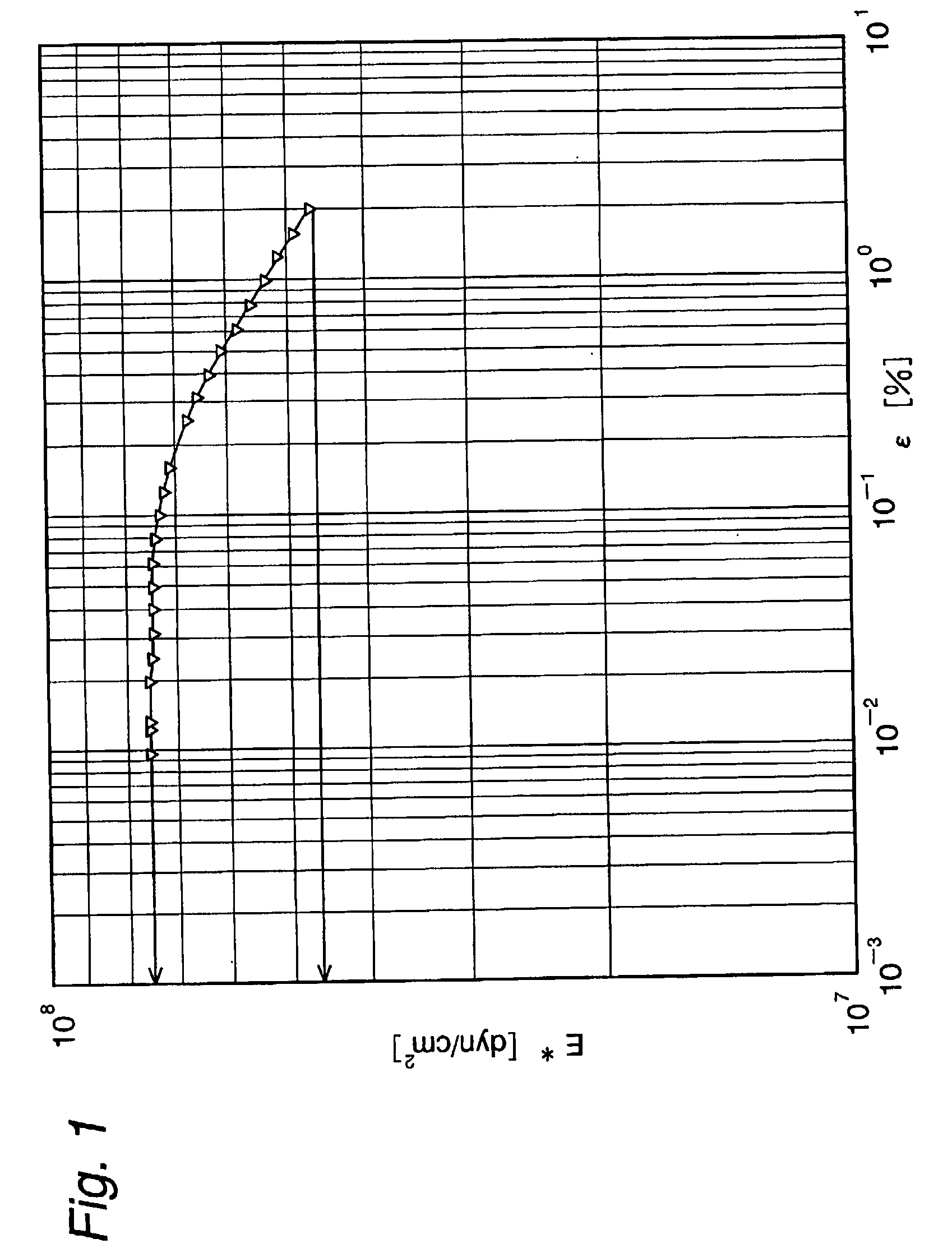Method of testing rubber composition for kneaded state and process for producing rubber composition
a technology of rubber composition and kneaded state, which is applied in the direction of instruments, non-metal conductors, conductors, etc., can solve the problems of inability to apply proper solution at a production site, a large amount of reinforcing filler, and difficulty in fine dispersing the filler into the ethylene. , to achieve the effect of good filler dispersion and stable kneading sta
- Summary
- Abstract
- Description
- Claims
- Application Information
AI Technical Summary
Benefits of technology
Problems solved by technology
Method used
Image
Examples
examples 1 to 6
[0196] Target Kneading Status Monitor Index (P)
[0197] 100 parts by weight of an ethylene-propylene-5-vinyl 2-norbornene copolymer rubber (molar ratio of ethylene / propylene=70 / 30, iodine value=20) as an ethylene-.alpha.-olefin based copolymer rubber, 165 parts by weight of a carbon black (trade name: Asahi 60HG by Asahi Carbon K. K.), and 70 parts by weight of a softener (trade name: PW-380) were kneaded at 60.degree. C by using an 8-inch open roll mill to obtain an unvulcanized rubber composition which does not contain any vulcanizing agent and any vulcanization accelerator.
[0198] Then, about 20 g of the unvulcanized rubber composition was sampled, pressed by a 50-ton press machine at 160.degree. C. for 6 minutes, followed by 2 minutes press with residual heat, and cooled down with water for 5 minutes. Thus, an unvulcanized rubber sheet in 2 mm thickness with a square shape of 10 cm.times.10 cm was obtained.
[0199] This unvulcanized rubber sheet was punched out into a couple of disc ...
PUM
| Property | Measurement | Unit |
|---|---|---|
| temperature | aaaaa | aaaaa |
| thickness | aaaaa | aaaaa |
| thickness | aaaaa | aaaaa |
Abstract
Description
Claims
Application Information
 Login to View More
Login to View More - R&D
- Intellectual Property
- Life Sciences
- Materials
- Tech Scout
- Unparalleled Data Quality
- Higher Quality Content
- 60% Fewer Hallucinations
Browse by: Latest US Patents, China's latest patents, Technical Efficacy Thesaurus, Application Domain, Technology Topic, Popular Technical Reports.
© 2025 PatSnap. All rights reserved.Legal|Privacy policy|Modern Slavery Act Transparency Statement|Sitemap|About US| Contact US: help@patsnap.com



